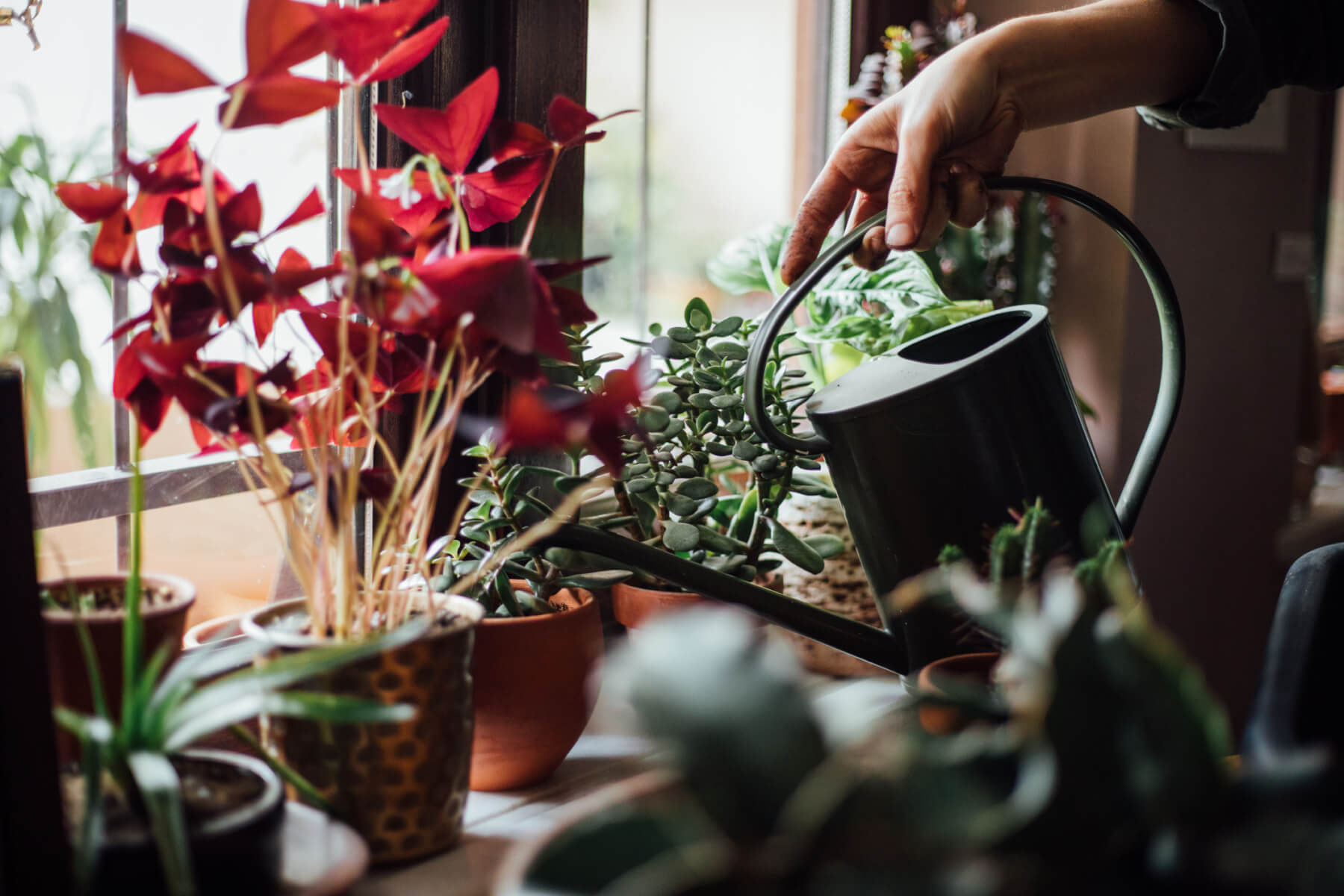Growing an Apartment Garden

May 2020
No patio or balcony? No problem. You can still grow a lush garden inside your four walls, regardless of how big or small your apartment is. “Going green” isn’t just about recycling – having plants helps make us happier and healthier! Growing an apartment garden can brighten up your space and clean the air you breathe. Lighten the mood in your apartment, freshen up your décor, and bring a little bit of spring indoors with the following advice on apartment gardening.
Space and Sunlight
Grow your garden on windowsills, on furniture near windows, or hang wall planters. Aside from the actual space you have available, observe and determine where the best sunlight can be found. Pick a day when you plan to be home and observe where the sun and shade fall at different times of the day. Take notes once an hour about which areas are in the sun and which are shaded. At the end of the day, add up the number of hours that each area in your apartment has received sunlight. The amount of sunlight in a particular area is important to determining which type of plants will thrive in those spaces.
Some plants require full sun, which is 6+ hours of direct sunlight per day (suitable for most flowering plants). Others thrive in partial sun, 4-5 hours of direct sun (most succulents), or partial shade, 2-3 hours of direct sun (spider plants and leafy plants like ivy and vines). Then there are plants that grow best in shaded areas with less than 1 hour of sun a day (like Peace Lilies).
Plants for Indoor Gardens
After you’ve taken inventory of locations and lighting, it’s time to pick out plants. Consider starting with plants that are known for health benefits, like removing pollutants and cleaning the air. Peace Lilies, for instance, have the ability to fight toxic gases and Bamboo Palms act as an air filter, ridding the space around it of harmful elements and chemicals. Next, you may want to add in some plants that have dual use benefits, like herbal and medicinal. Aloe Vera plants contain gel that can soothe sunburns and heal cuts.
Finally, beautify your space with some vibrant plants that will enhance the aesthetic of your home. Gerber Daisies come in a variety of bright colors and do best near a sunny window. African Violets are gorgeous and bloom several times a year. Succulents and cacti are lovely and low maintenance. A ficus tree makes a great indoor plant that survives for many years.
Apartment Garden Care
If you’re new to apartment gardening, consider starting with a few low maintenance plants. The easier your plants are to care for, the more successful your garden will be. Take note of the following basic care instructions and get planting.
- Water Plants Once a Week: This is for plants that don’t need full sun. Some plants (like cacti) require even less frequent watering. This is an important part of garden care since overwatering can lead to moldy roots. You can also get an inexpensive moisture meter to be more precise about when it’s time to water.
- Be Attentive to Lighting: Light levels change with the seasons, so adjust the location of your plants accordingly. Pay attention to leaf colors over time. Burnt leaves can mean overexposure to the sun and pale green or yellow leaves can indicate lack of sun.
- Change Pots and Soil Periodically: Soil eventually becomes devoid of nutrients. Try adding compost to your soil to keep it nutrient-rich. To keep plants in the best condition and give them space to grow, switch out the soil and wash the pots every so often, moving larger plants into bigger pots as needed. You can also use a houseplant fertilizer to augment the soil.
- Prevent Insects By Keeping Fertile Soil: Sometimes indoor plants fall victim to small insects like aphids and spider mites. Instead of using chemicals, keep your plants healthy with compost and worm tea (a natural insect repellant!) to keep bugs at bay.
